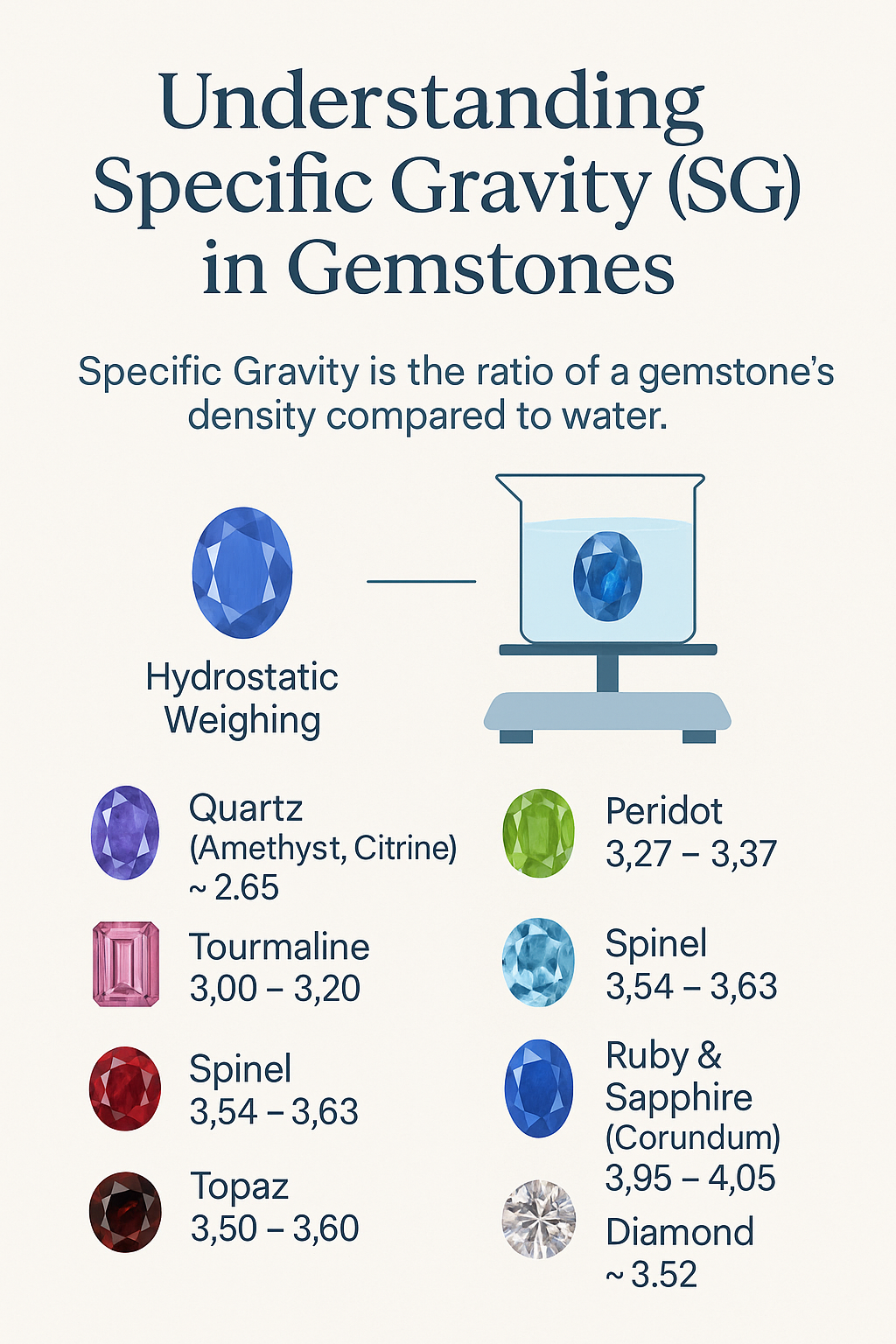Understanding Specific Gravity (SG) in Gemstones

When it comes to identifying gemstones, beauty alone isn’t enough. Gemologists rely on physical properties to distinguish one stone from another, and one of the most important is Specific Gravity (SG).
What Is Specific Gravity (SG)?
Specific Gravity is the ratio of a gemstone’s density compared to water. In simple terms, it shows how “heavy” a gem feels for its size. A higher SG means the gemstone is denser and heavier than a gem of the same size with a lower SG.
Example: A garnet feels noticeably heavier than a piece of quartz of the same dimensions because garnet has a higher SG.
How to Test SG
Gemologists use several methods to measure SG:
Hydrostatic Weighing
The gemstone is weighed in air, then in water. The difference in weight allows calculation of SG.
This is the most common and accurate method.
Heavy Liquids Method
Gems are placed in liquids of known densities. If the stone sinks, its SG is higher than the liquid; if it floats, it’s lower.
Less common today due to safety concerns.
Modern Electronic Devices
Portable instruments can give quick SG readings with minimal setup.
SG Values of Popular Gemstones
Each gem type has a characteristic SG, which helps in identification:
Quartz (Amethyst, Citrine): ~2.65
Peridot: 3.27 – 3.37
Tourmaline: 3.00 – 3.20
Spinel: 3.54 – 3.63
Topaz: 3.50 – 3.60
Ruby & Sapphire (Corundum): 3.95 – 4.05
Garnet Group: 3.80 – 4.20 (varies by type)
Diamond: ~3.52
Why SG Matters
Identification – SG helps confirm whether a gemstone is genuine or an imitation.
Education – Buyers gain confidence when they understand the science behind their gem.
Uniqueness – Each gemstone species has a natural SG range, reinforcing its authenticity and rarity.
✨ At Asher Gems, every stone aligns with its natural physical properties—including SG—so customers can buy with confidence.
Recent Posts
-
Understanding Specific Gravity (SG) in Gemstones
When it comes to identifying gemstones, beauty alone isn’t enough. Gemologists rely on physical p …18th Sep 2025 -
Discover the Magic of Madagascar Blue-Green Sapphire
Discover the Magic of Madagascar Blue-Green Sapphire If you’re a gemstone lover, you’ve surely heard …11th Jul 2025 -
Champagne Sapphire: A Unique Sparkle in the Sapphire Spectrum
Champagne Sapphire: A Unique Sparkle in the Sapphire Spectrum Champagne sapphire is an elegant and u …26th May 2025